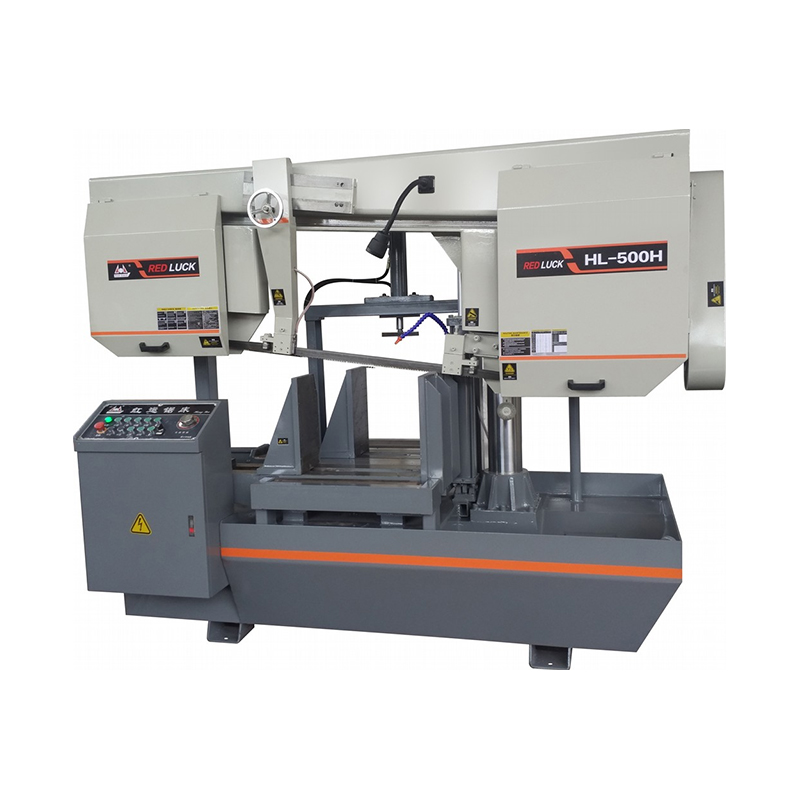How to Optimize Cutting Speed and Accuracy on a Metal Horizontal Band Saw?
Let's look at the foundation: the metal horizontal band saw itself. These machines are specifically designed for horizontal cutting applications, allowing gravity-assisted blade motion and providing a firm, controlled environment for slicing through metal bars, pipes, and blocks. While many users focus solely on the blade type, the overall condition and setup of the metal horizontal band saw also play a big role in optimizing performance.
One of impactful ways to enhance cutting precision and speed is by investing in a CNC bandsaw machine. CNC, or Computer Numerical Control, introduces automation and programmable controls that allow operators to set cutting lengths, angles, and feed rates with a high degree of accuracy. When using a CNC bandsaw machine, it's essential to calibrate it correctly before starting a job. Programming the machine according to the material type and size ensures the blade moves efficiently and consistently, reducing the risk of errors or rework.

Additionally, the integration of a hydraulic CNC machine system can significantly boost your cutting performance. Hydraulic control adds precision to blade descent, clamping pressure, and material feed rate. When using a hydraulic CNC machine, you can adjust the downforce to match the hardness of the metal, preventing the blade from binding or overloading. This kind of control is particularly useful when cutting harder materials like stainless steel or tool steel, where maintaining blade condition is critical.
Blade selection is another crucial factor in optimizing a metal horizontal band saw. Choosing the correct tooth pitch and blade material can drastically affect cutting efficiency. For example, a finer tooth blade is better for thin-walled tubing, while a coarser tooth blade works for solid bars. Pairing the right blade with the cutting parameters programmed into a CNC bandsaw machine ensures consistent results, even during long production runs.
Proper maintenance of your metal horizontal band saw is also key to consistent performance. This includes checking blade tension, cleaning debris from the work area, and regularly lubricating moving parts. Even advanced CNC bandsaw machine will underperform if maintenance is neglected. Similarly, a hydraulic CNC machine relies on clean, well-maintained fluid systems to provide consistent pressure and movement.
Another important step is aligning the workpiece correctly before cutting. Misalignment not only guides to uneven cuts but also increases blade wear. Using a hydraulic CNC machine often includes built-in clamping systems that help secure the workpiece. Ensuring that the material is firmly held prevents vibration and allows the metal horizontal band saw to perform smooth, straight cuts at good speed.
Monitoring feed rate is essential as well. Many users are tempted to speed up the feed to complete jobs faster, but this often backfires by overheating the blade or creating rough cuts. With a CNC bandsaw machine, the feed rate can be adjusted in real-time depending on how the blade is reacting to the material. This feedback loop makes a big difference in extending blade life and improving finish quality.
Lastly, operator training cannot be overlooked. Even with a hydraulic CNC machine or an advanced CNC bandsaw machine, the results are only as good as the operator's knowledge. Understanding the relationship between blade speed, material hardness, and hydraulic pressure helps users make smarter decisions on the shop floor.
Optimizing the cutting speed and accuracy of a metal horizontal band saw involves more than just setting the machine and pressing start. By leveraging the capabilities of a CNC bandsaw machine, incorporating hydraulic CNC machine features, selecting the right blade, and ensuring proper maintenance and alignment, operators can achieve high-performance results with every cut. Whether in a small workshop or a large industrial setting, these strategies can significantly enhance productivity and quality.

 English
English 中文简体
中文简体 русский
русский

